-
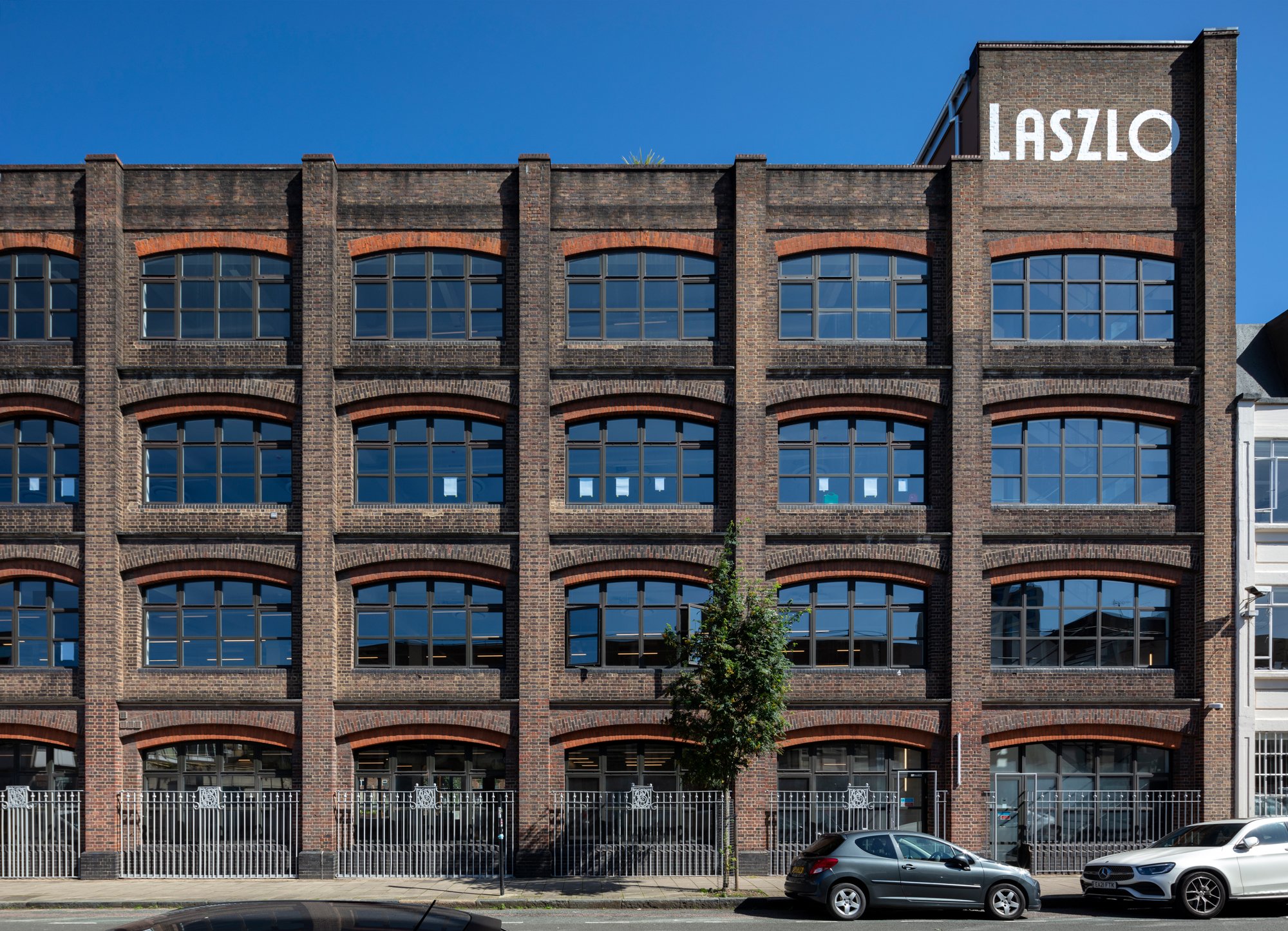
A celebration and extension of an industrial language, one that breathes new life into the building whilst simultaneously making it more itself
-

The ‘Backyard’ designed by Jonathan Cook Landscape Architects, including a greenhouse and grow-beds, provides respite within a grove of birch and cherry trees, along with plantings and climbers that will over time literally knit the building to its surroundings
-
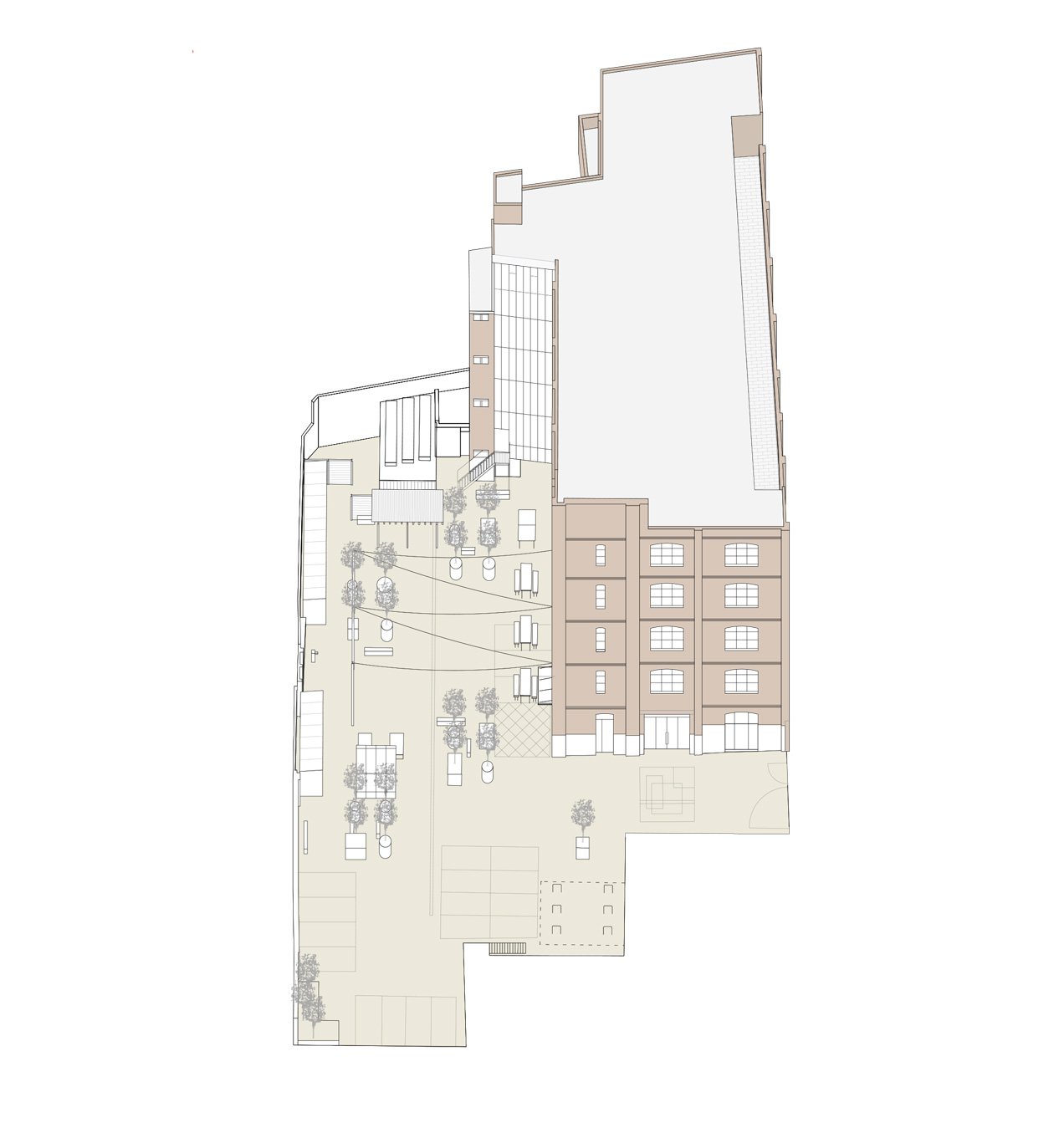
Planometric, exterior
-
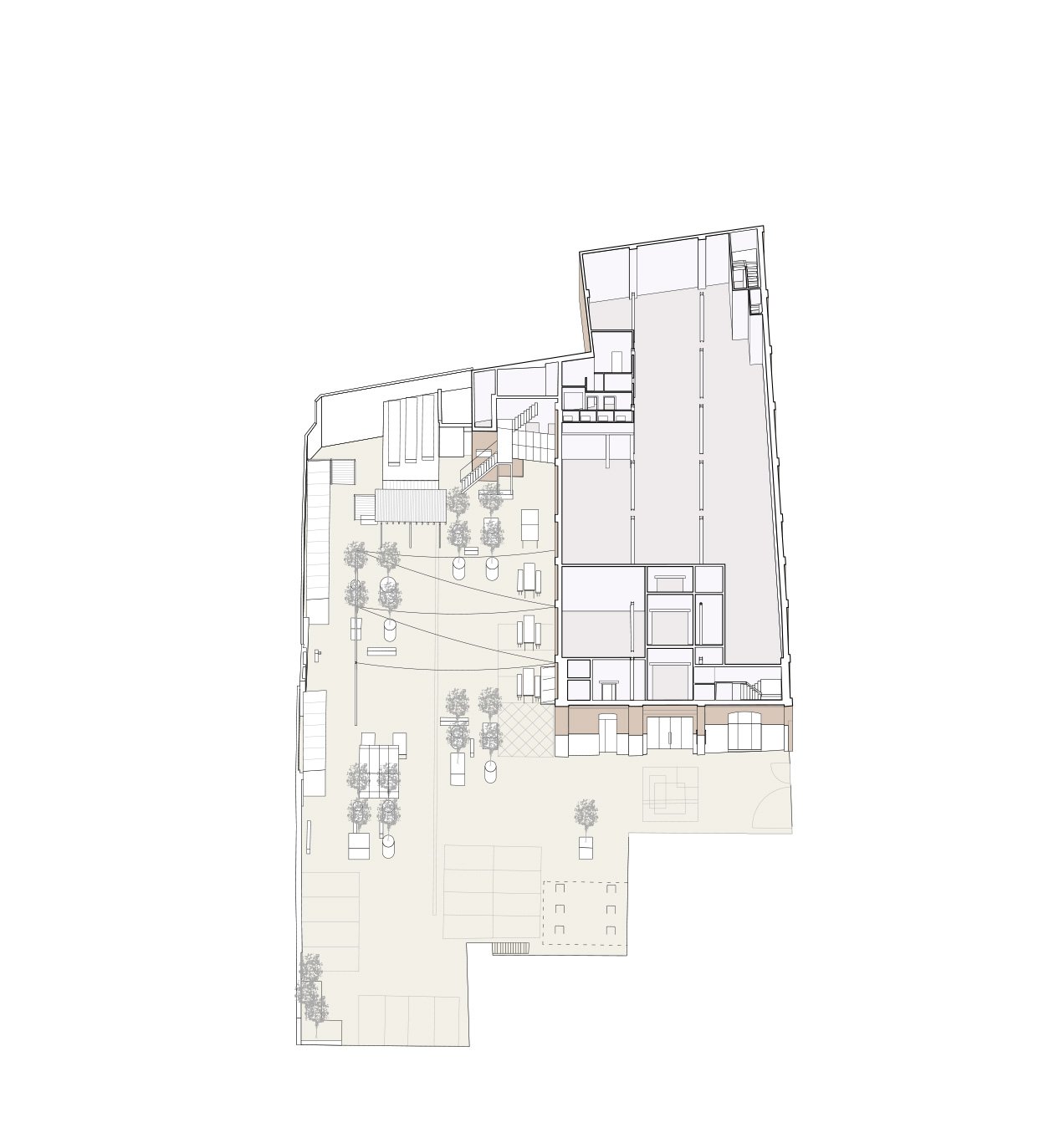
Planometric, ground floor
-
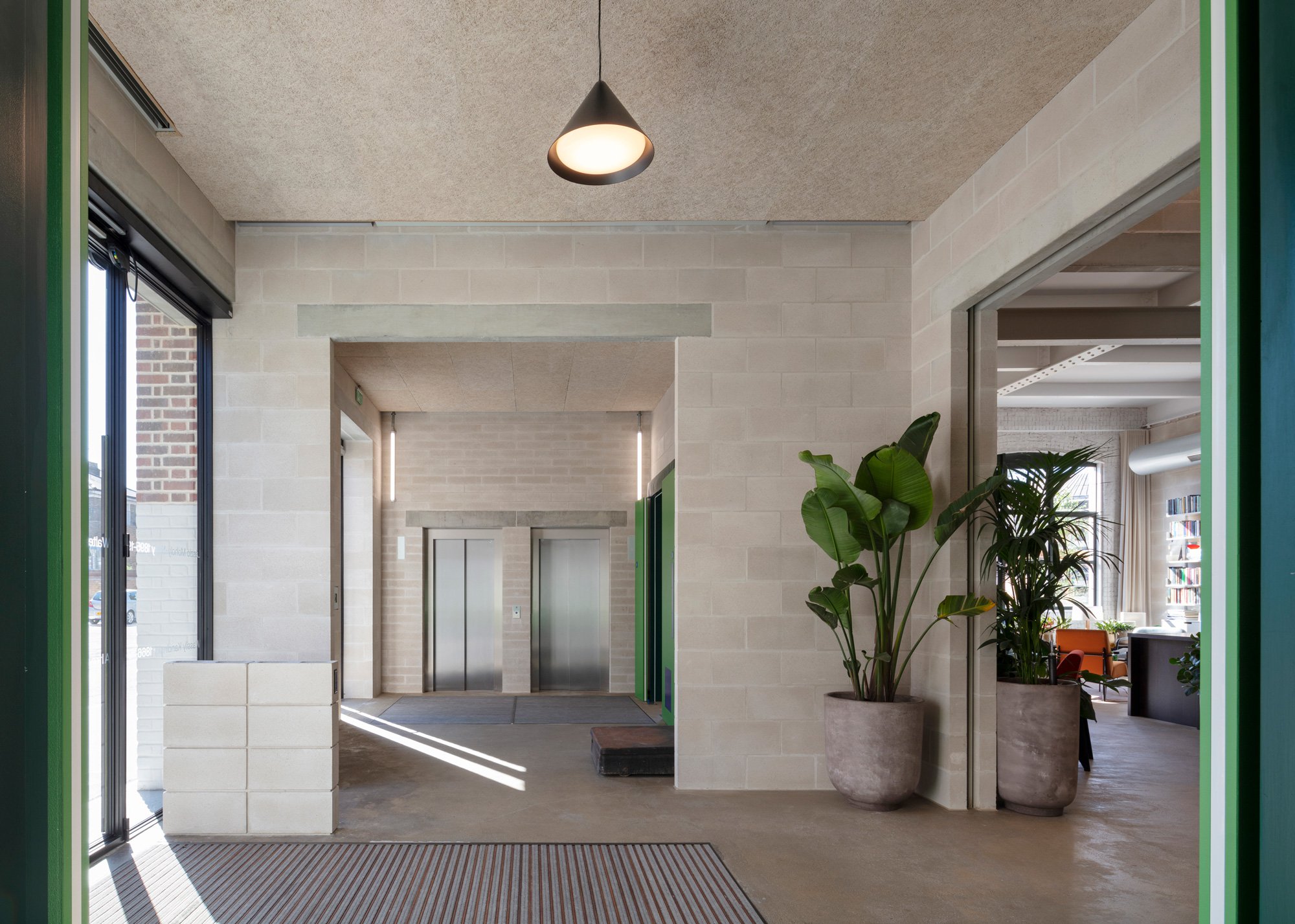
-
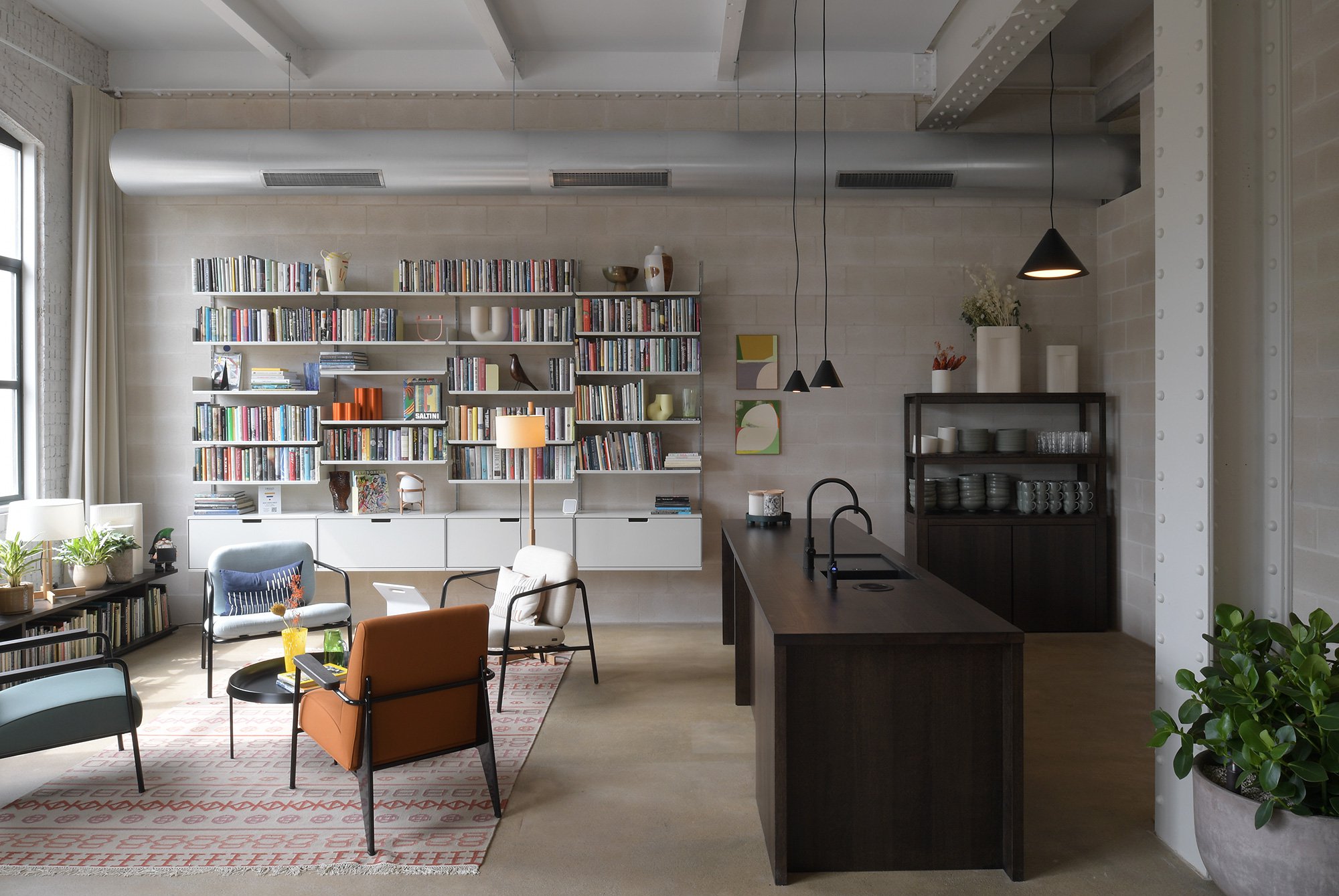
Blockwork walls shape a group of interconnected rooms – hall, lift lobby, reception and “living room” (seen here)
-
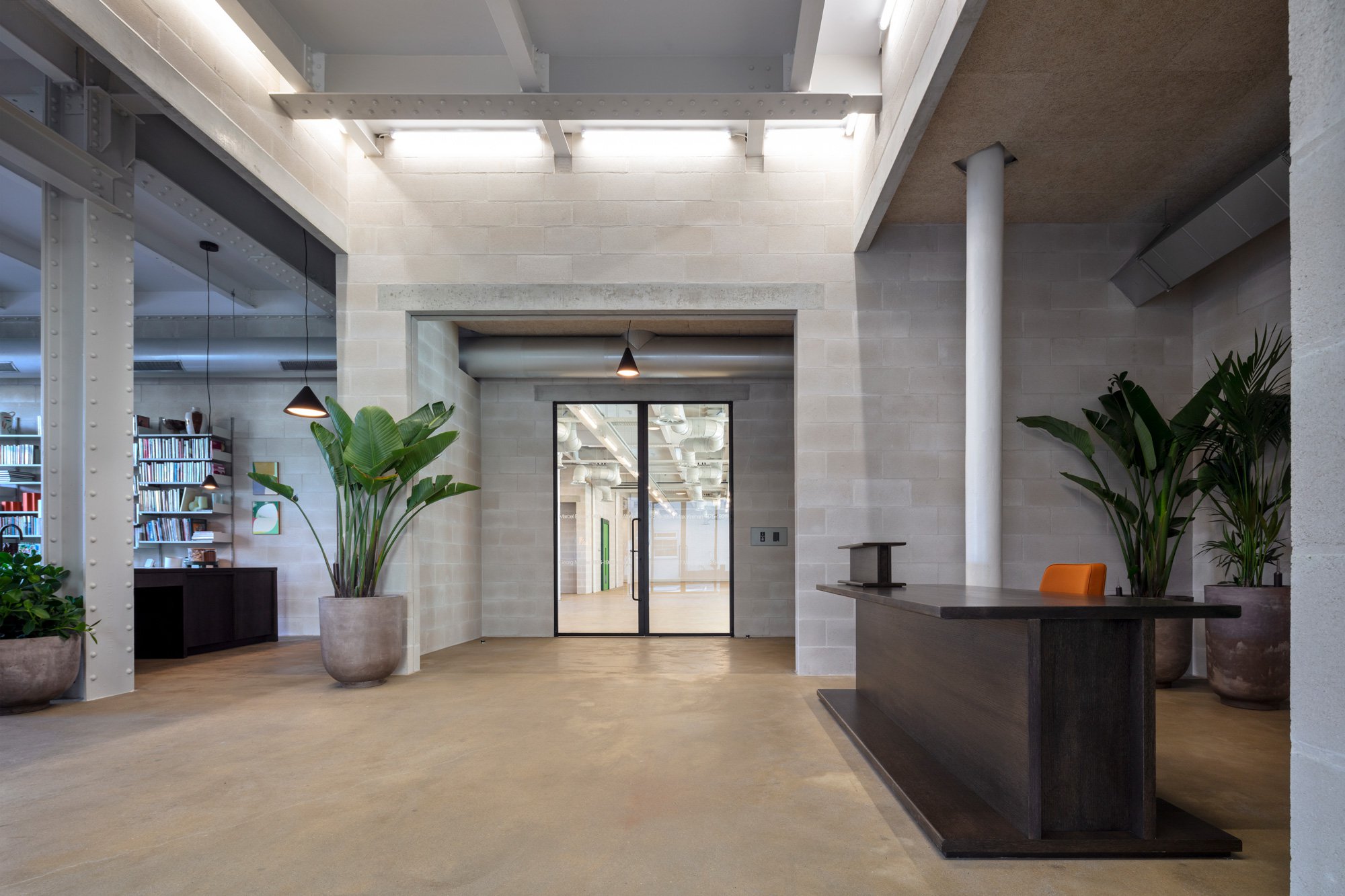
Pieces of furniture are imagined and made as oversized elements of structure, placing them in playful dialogue with the building’s newly exposed frame
-
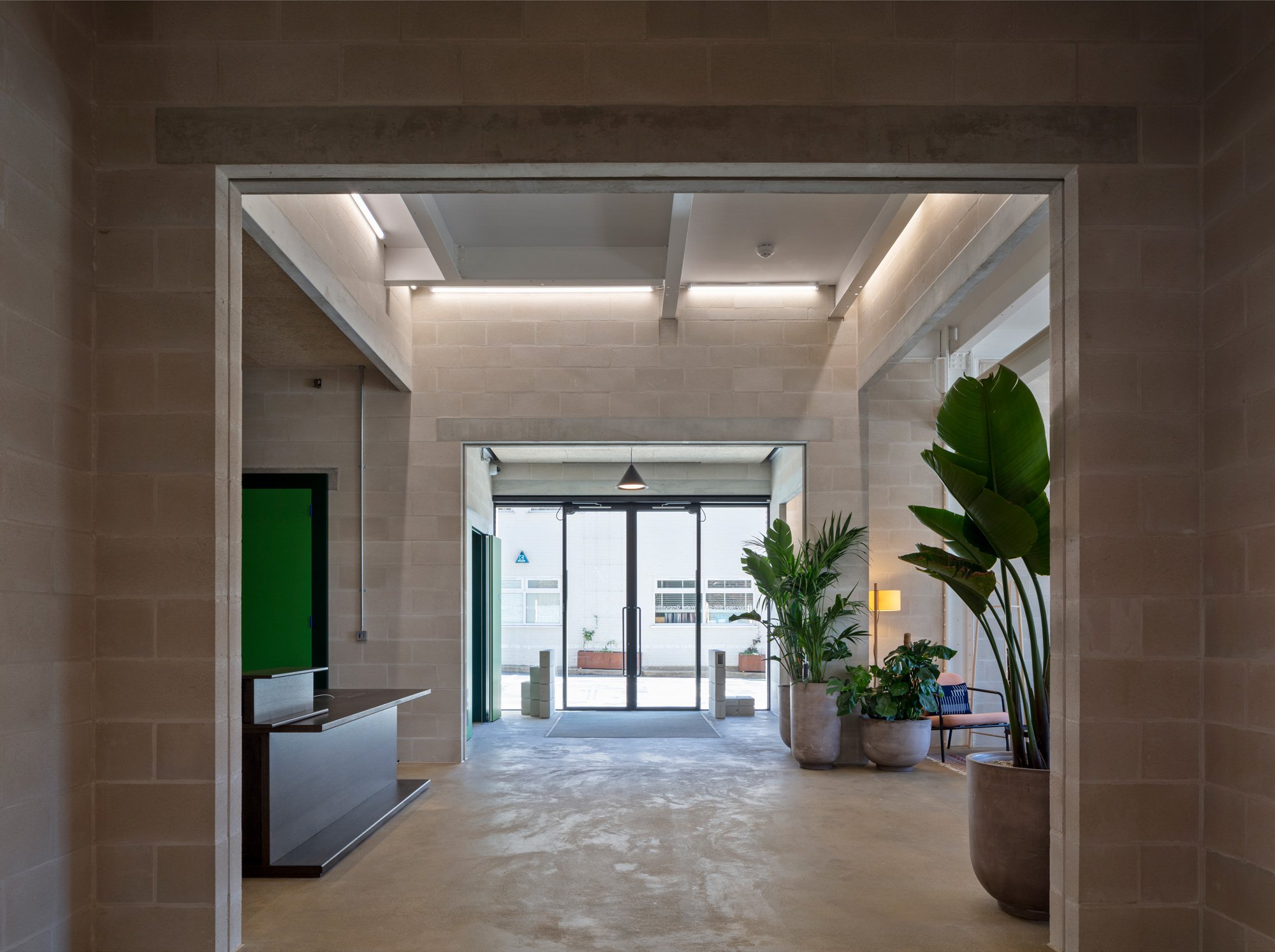
-
Drone footage courtesy of Open Contracts, main contractor for The Laszlo.
-
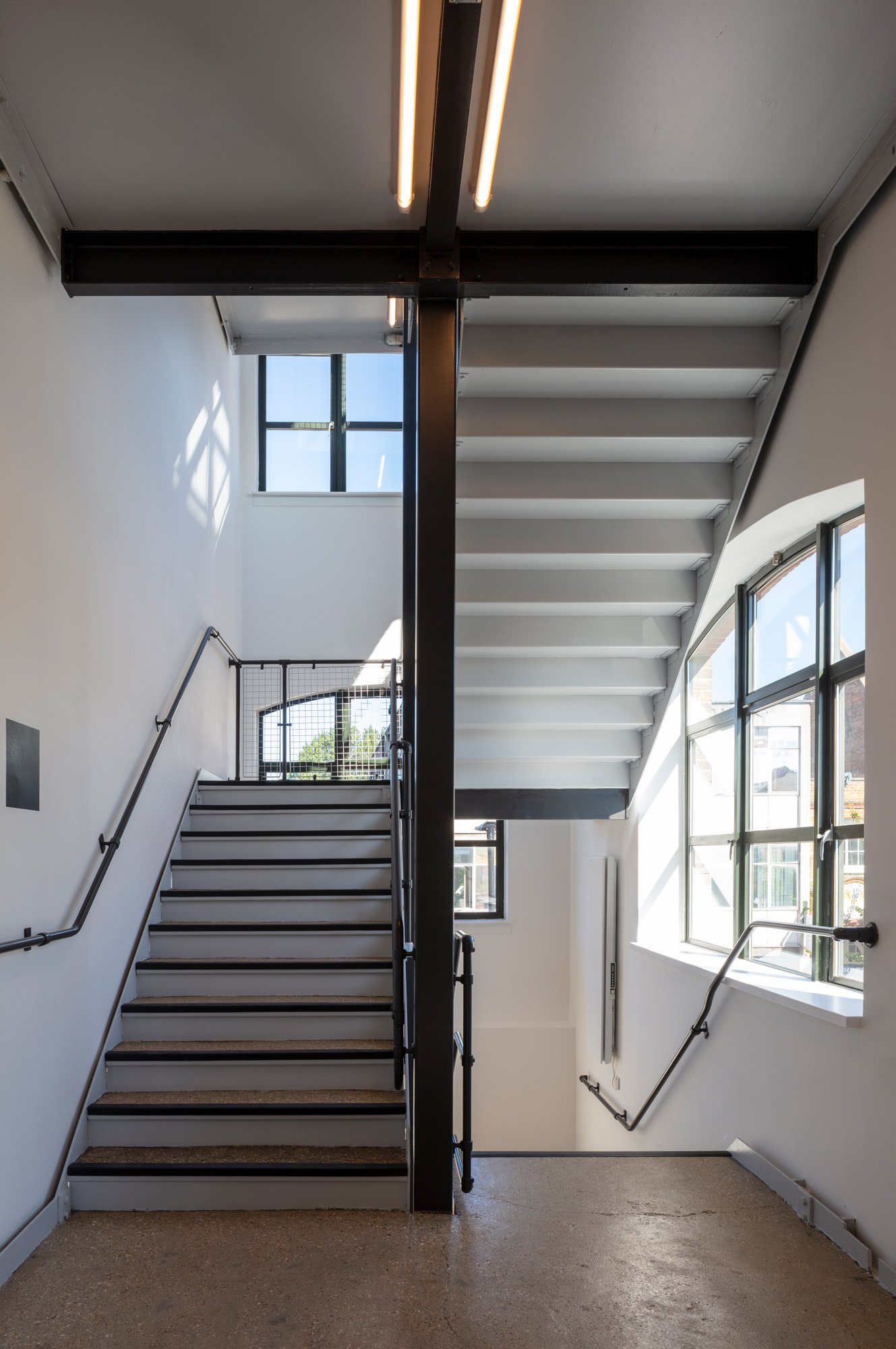
The staircase is an illustration of how the articulation of architectural elements strengthens the original character of the building
-

Section AA'
-

Section BB'
-
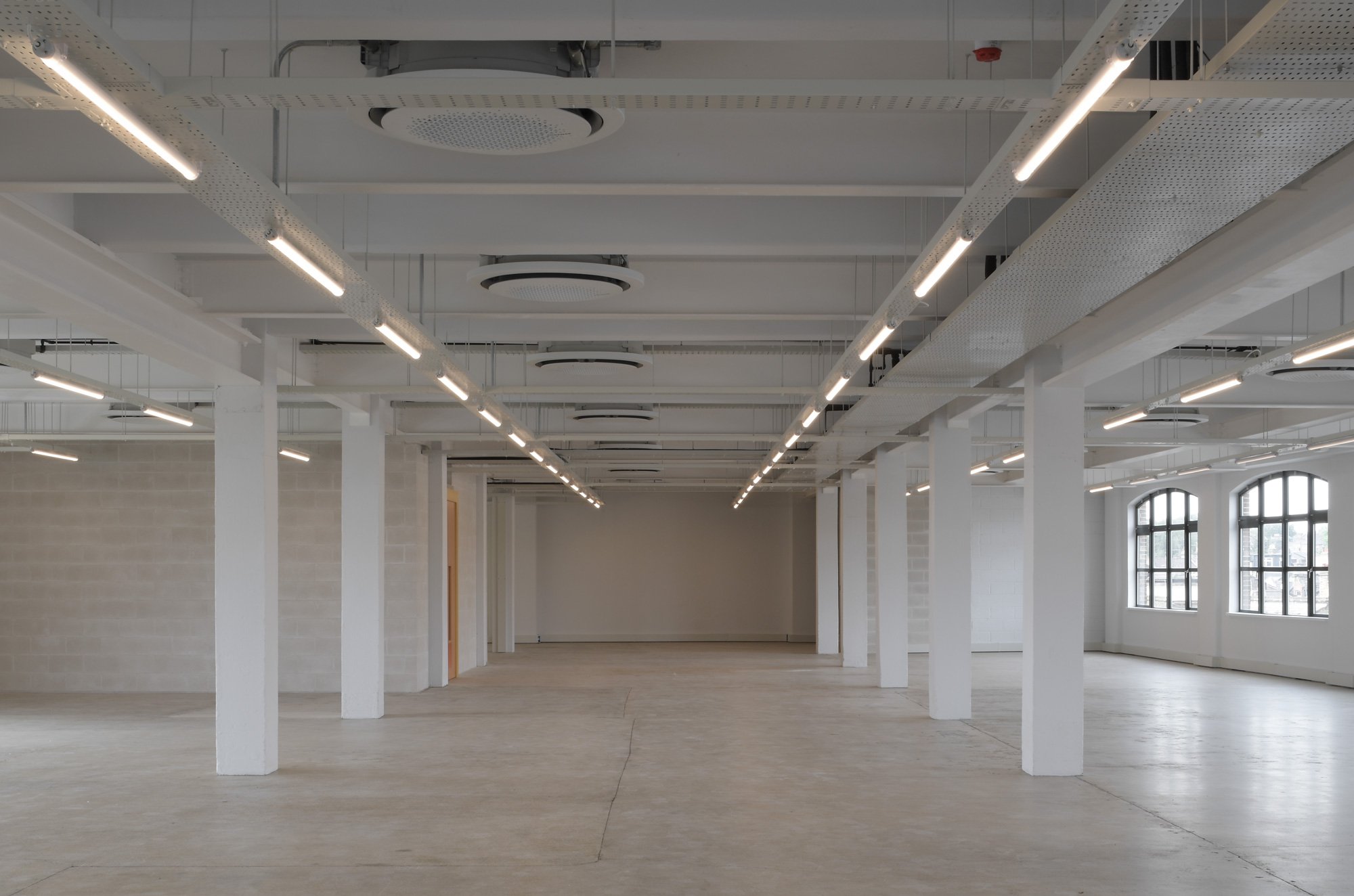
For decades, office building construction has been staged into “shell and core” and subsequent “fit-out”, reflecting a speculative approach. The specificity of the office interior – the degree to which it is branded, furnished and dressed, much like a hotel might be – has intensified as the product-nature of the office, rendering it disposable
-
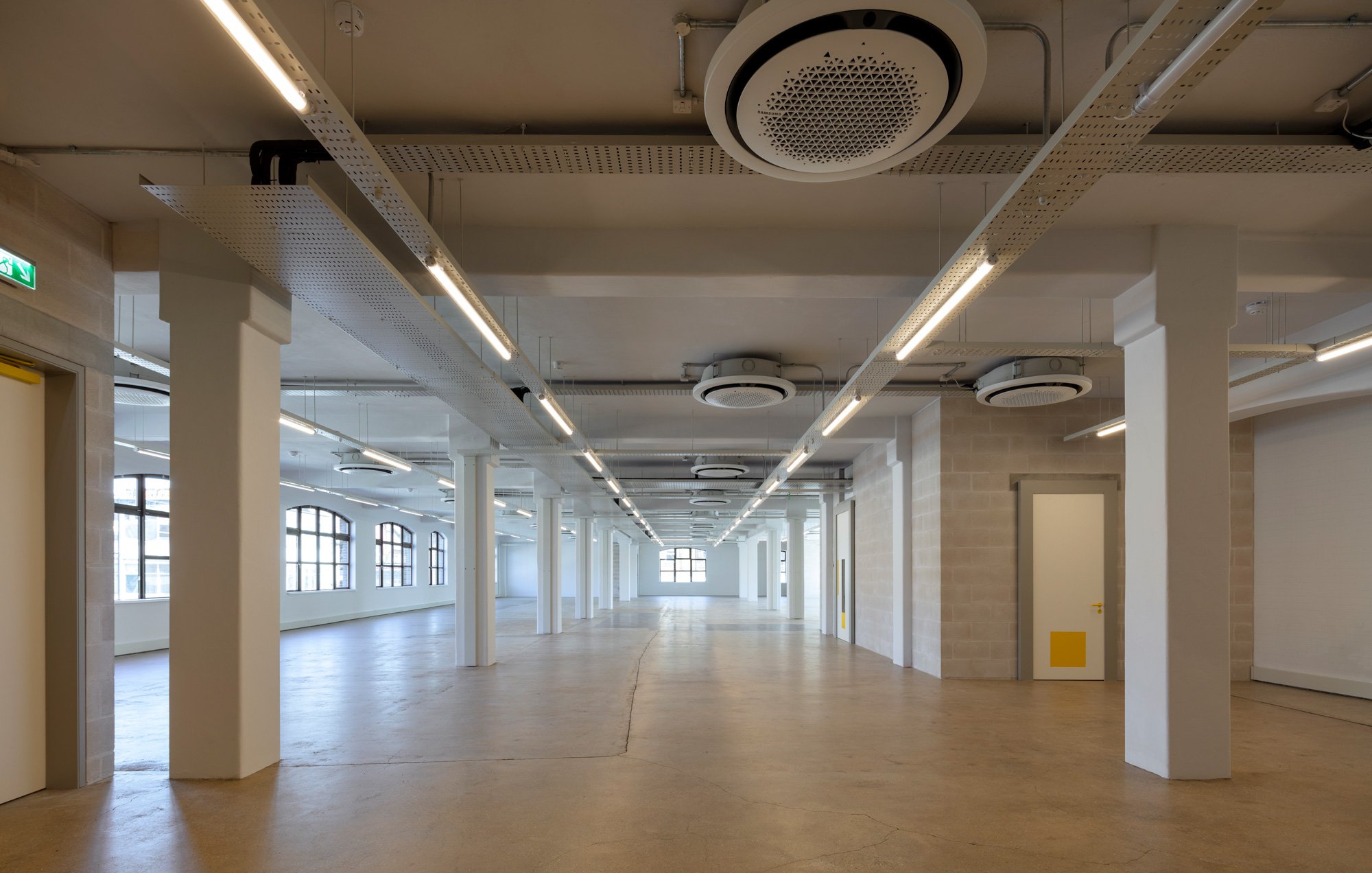
In this context, The Laszlo’s design seeks to illustrate how elementary the construction of an office might be, by exposing the 100-year-old fabric and making adjustments to it with low-tech building techniques and materials
-
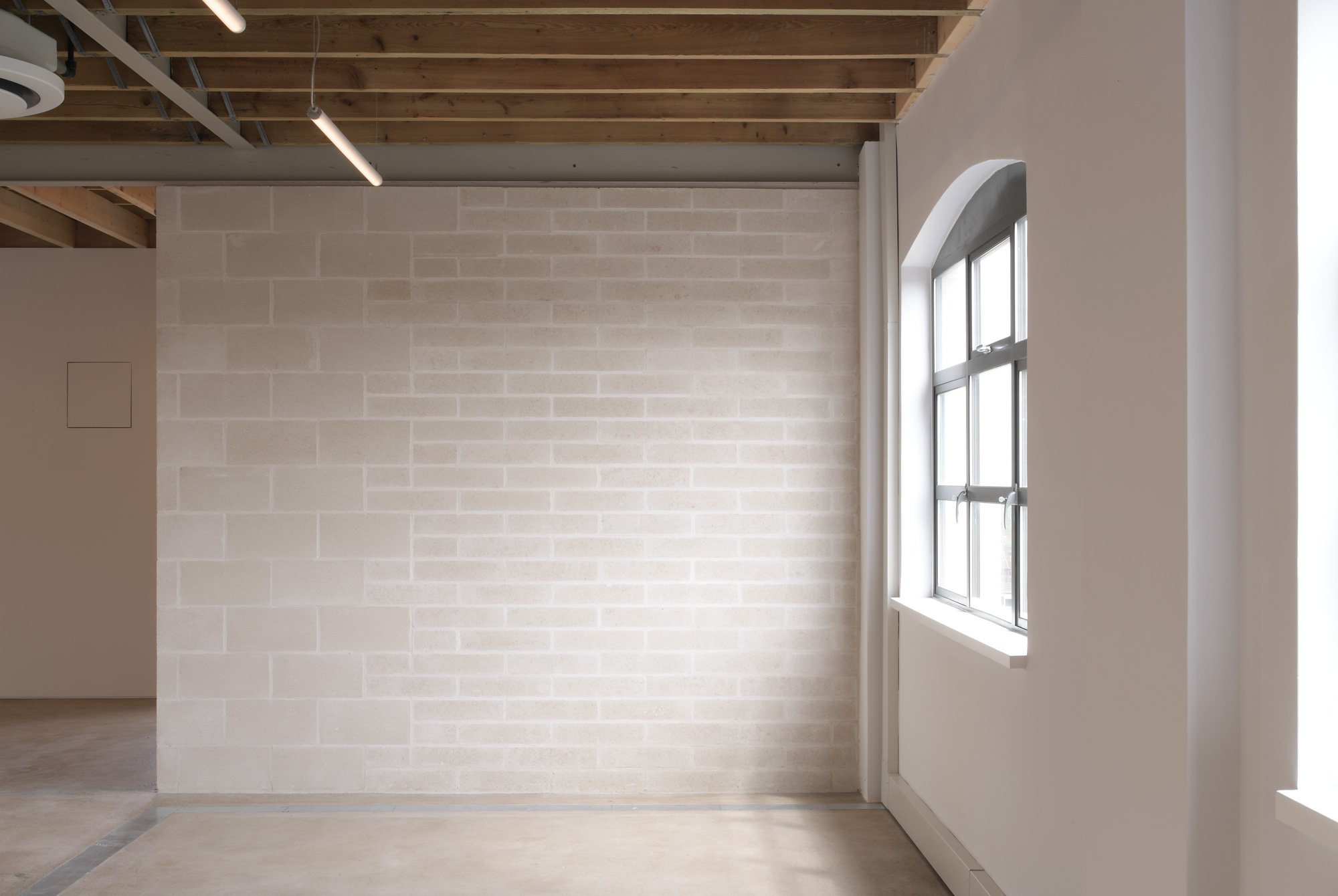
-
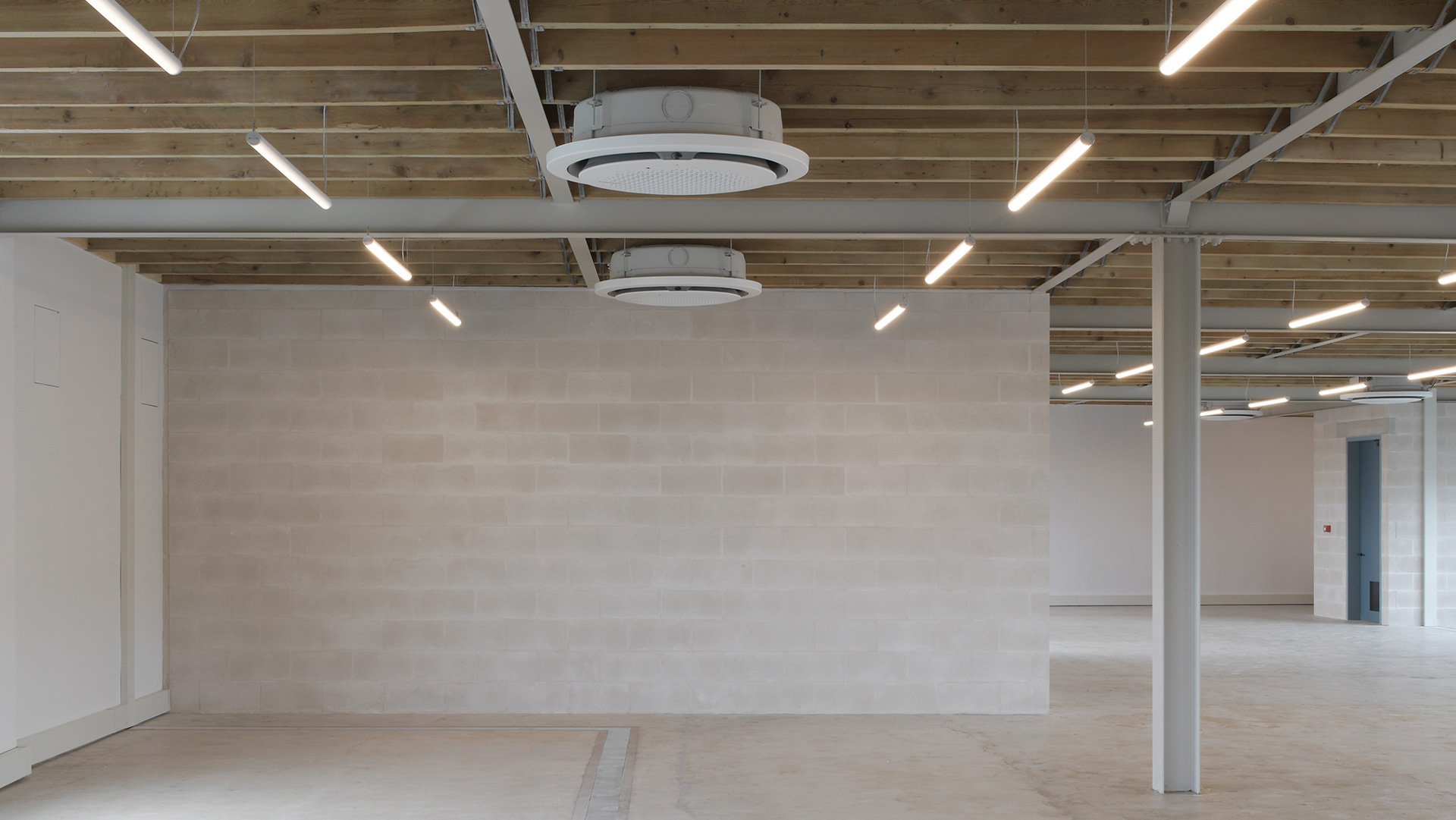
-
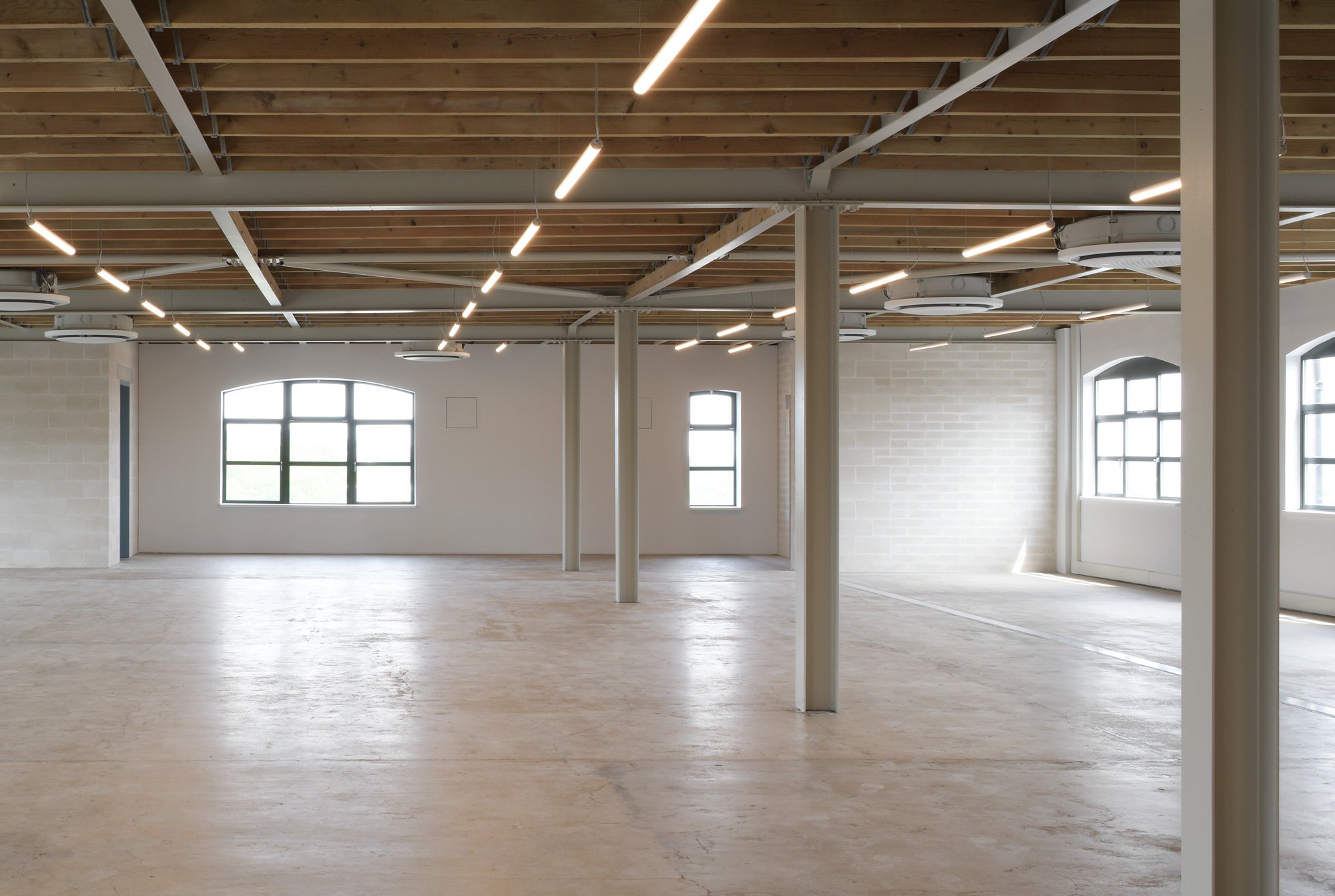
On the top floor, the new work reveals the 1980s steel and timber joisted roof. Throughout, exposed steel beams and cable trays are coloured ivory and light grey, contributing to a painterly interior on which daylight and artificial light fall, and shadows are cast
-
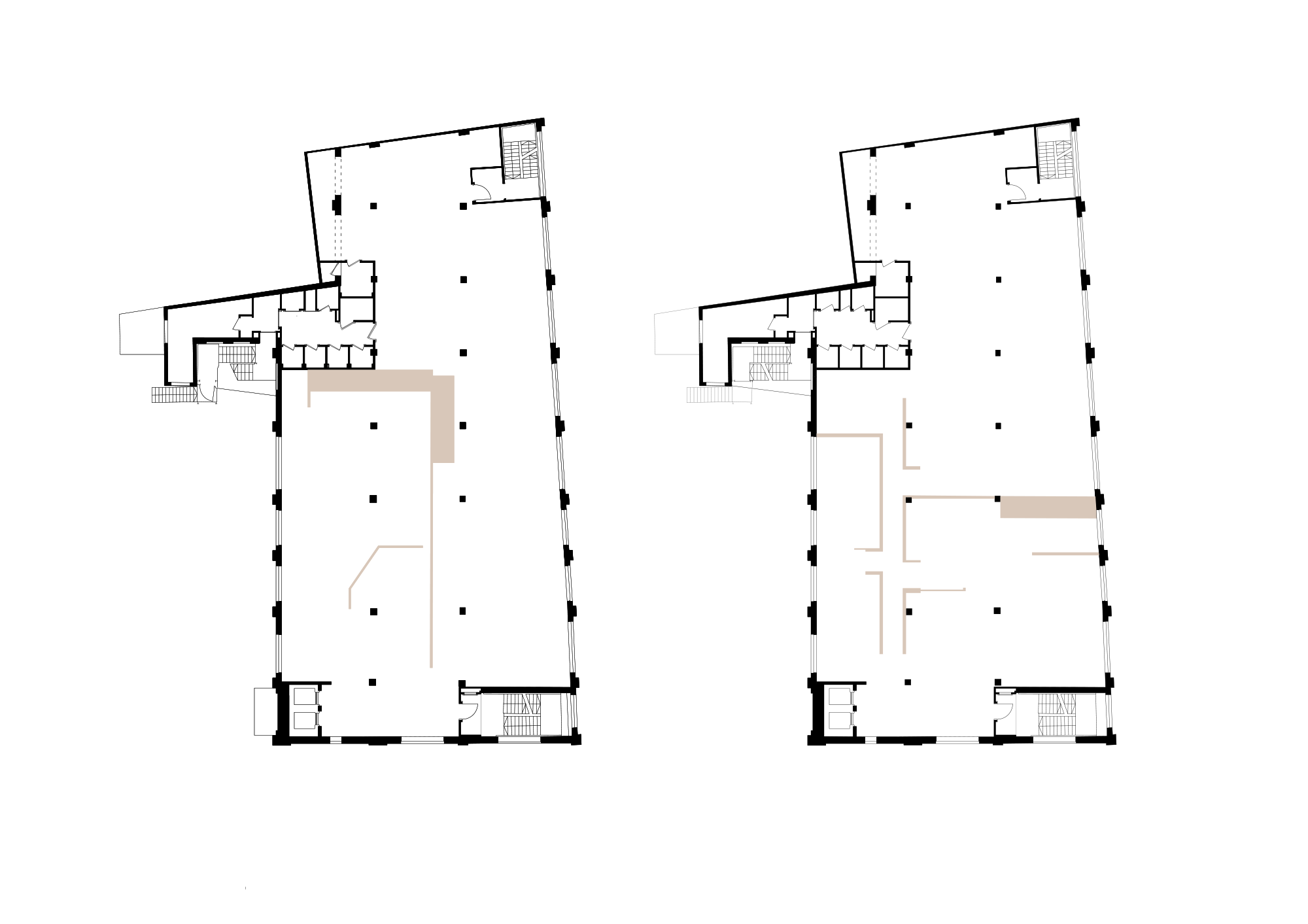
Plans, first floor (left) and second floor (right). A painting by Lazlo Moholy Nagy became the inspiration for the repairs we made to the concrete floors, inlaying earth-coloured screed where partitions previously cut into the floor had been removed
-
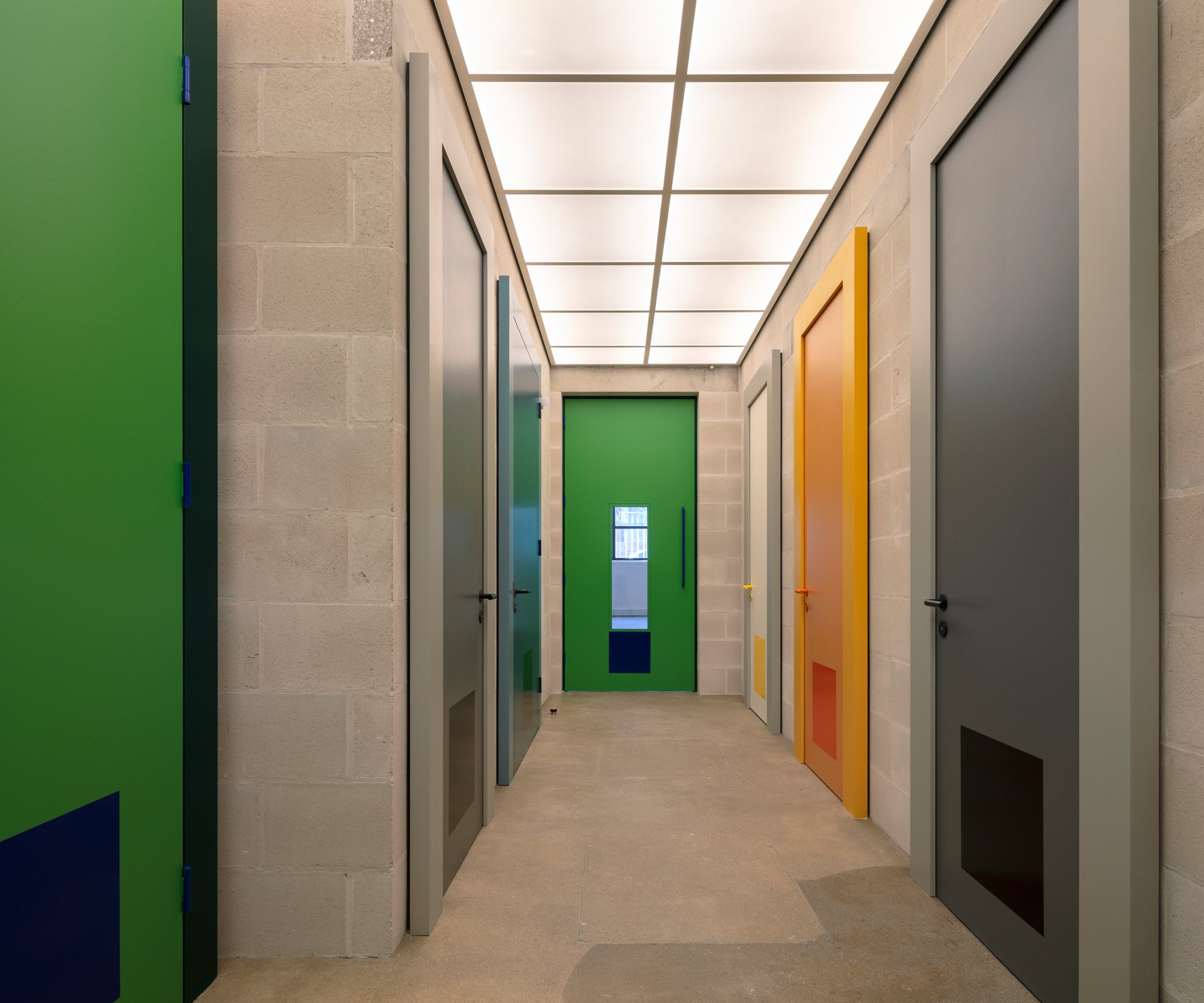
The introduction of a subtle and consideared colour scheme gives fittings and fixtures an architectural quality, coherence and rigour that separates these from the usual surface styling of interior designers
-
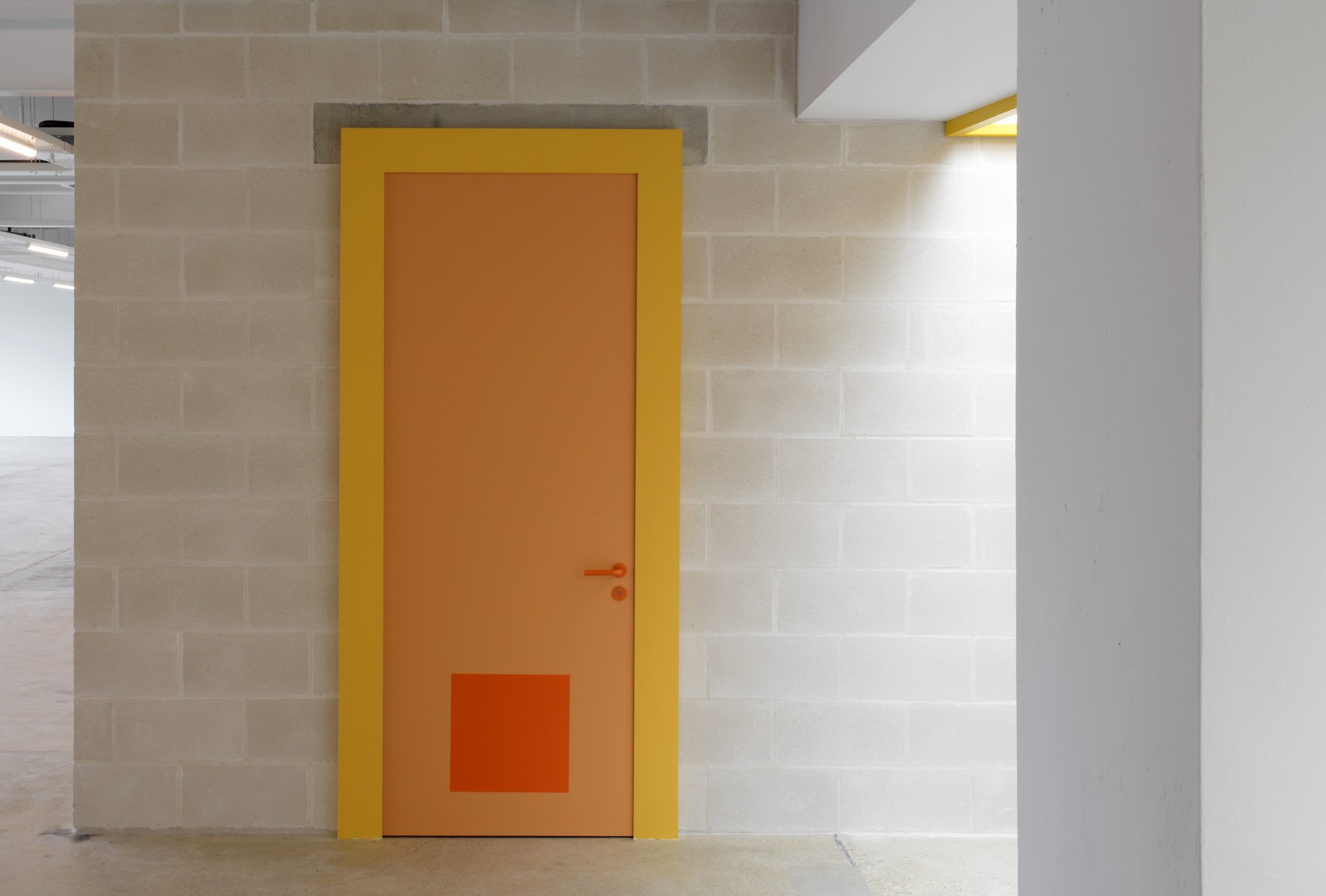
The doors take their cue from Josef Albers’s colour studies, their frames superimposed like a canvas hung on a wall
-
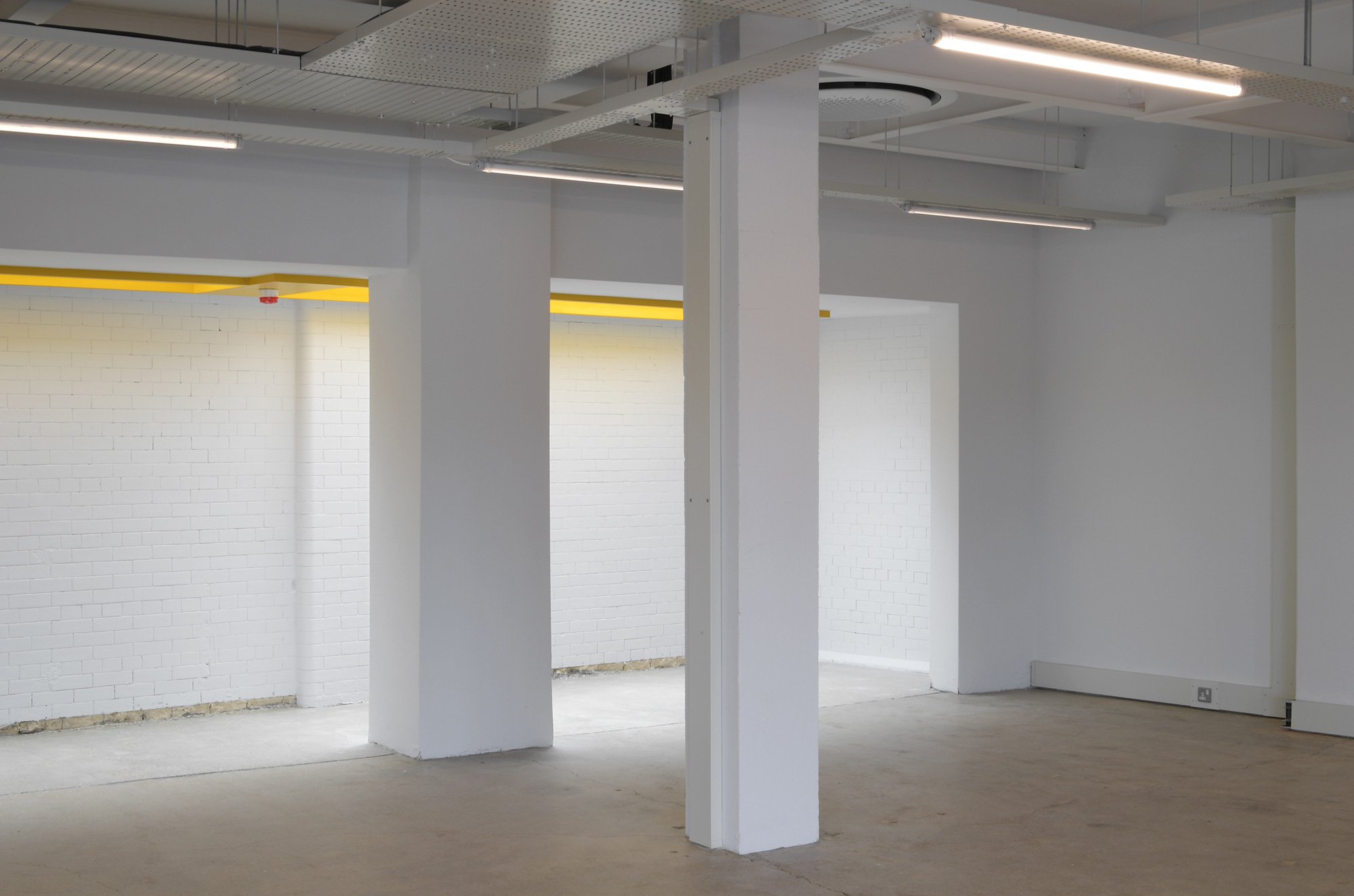
The Laszlo uses a refined approach to working with colour
-
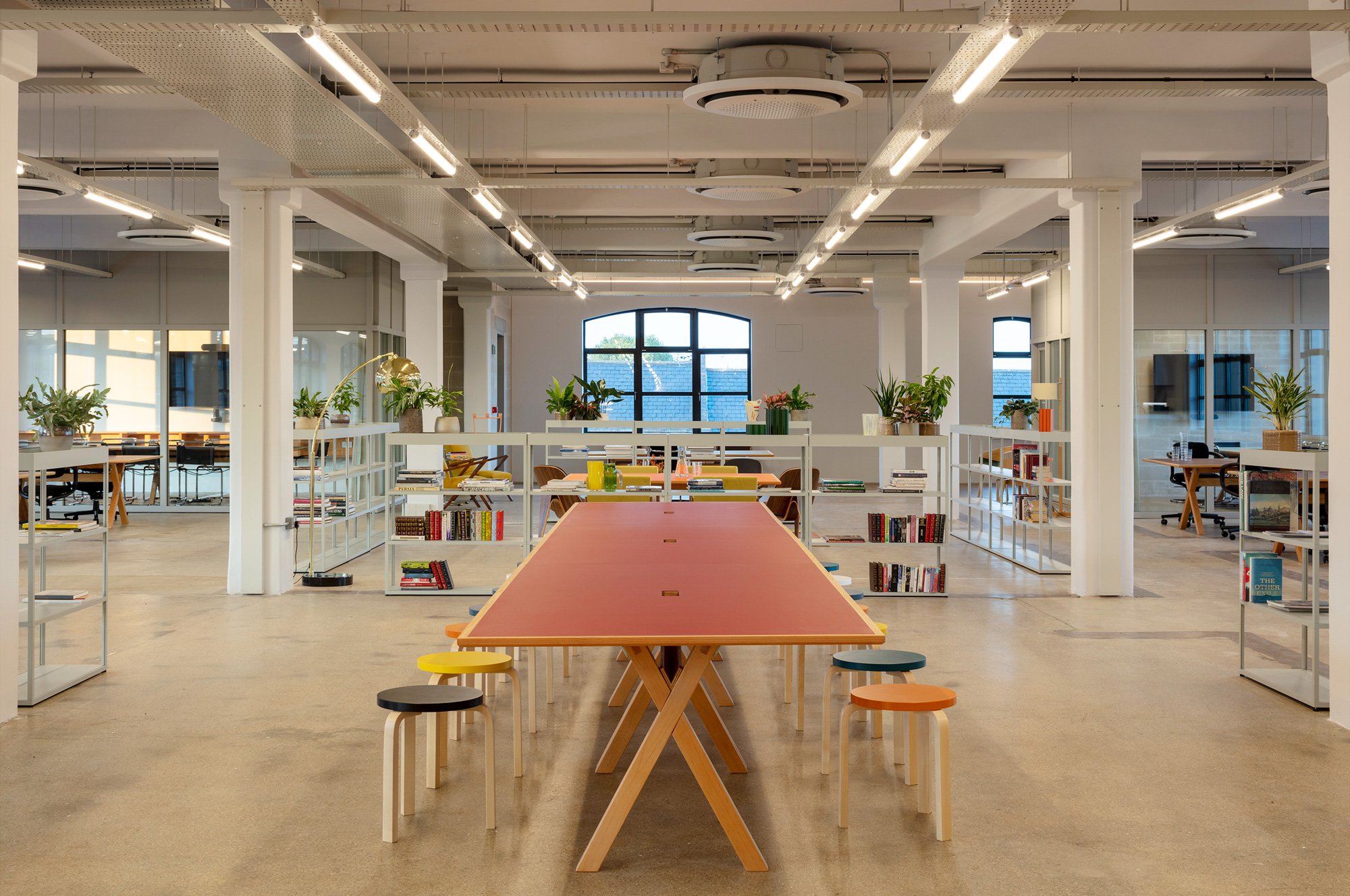
Reusing the existing building in this way equates to a saving of 80 years of operational carbon emissions
-
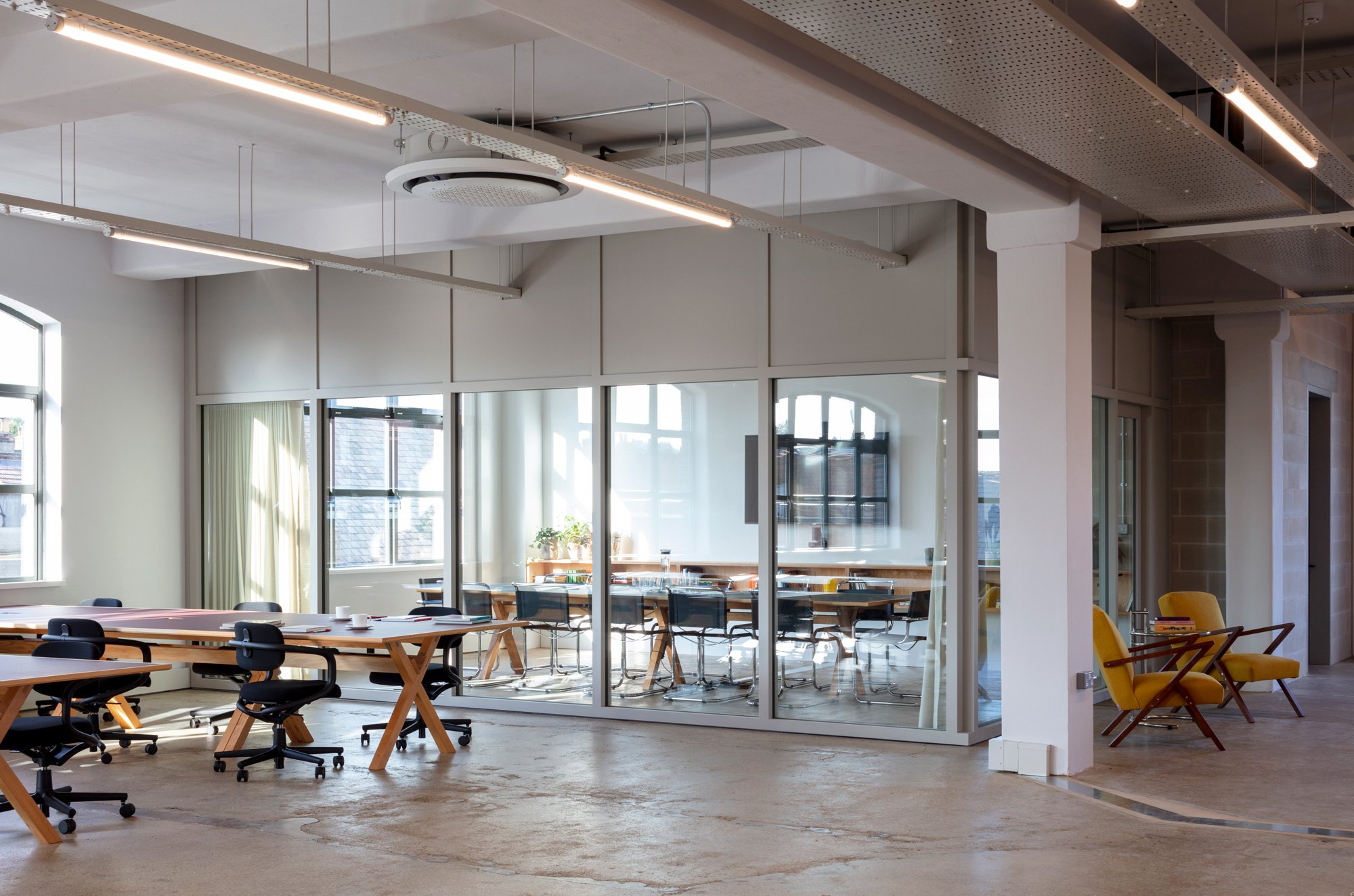
It provides flexible creative workspace with meeting rooms
-
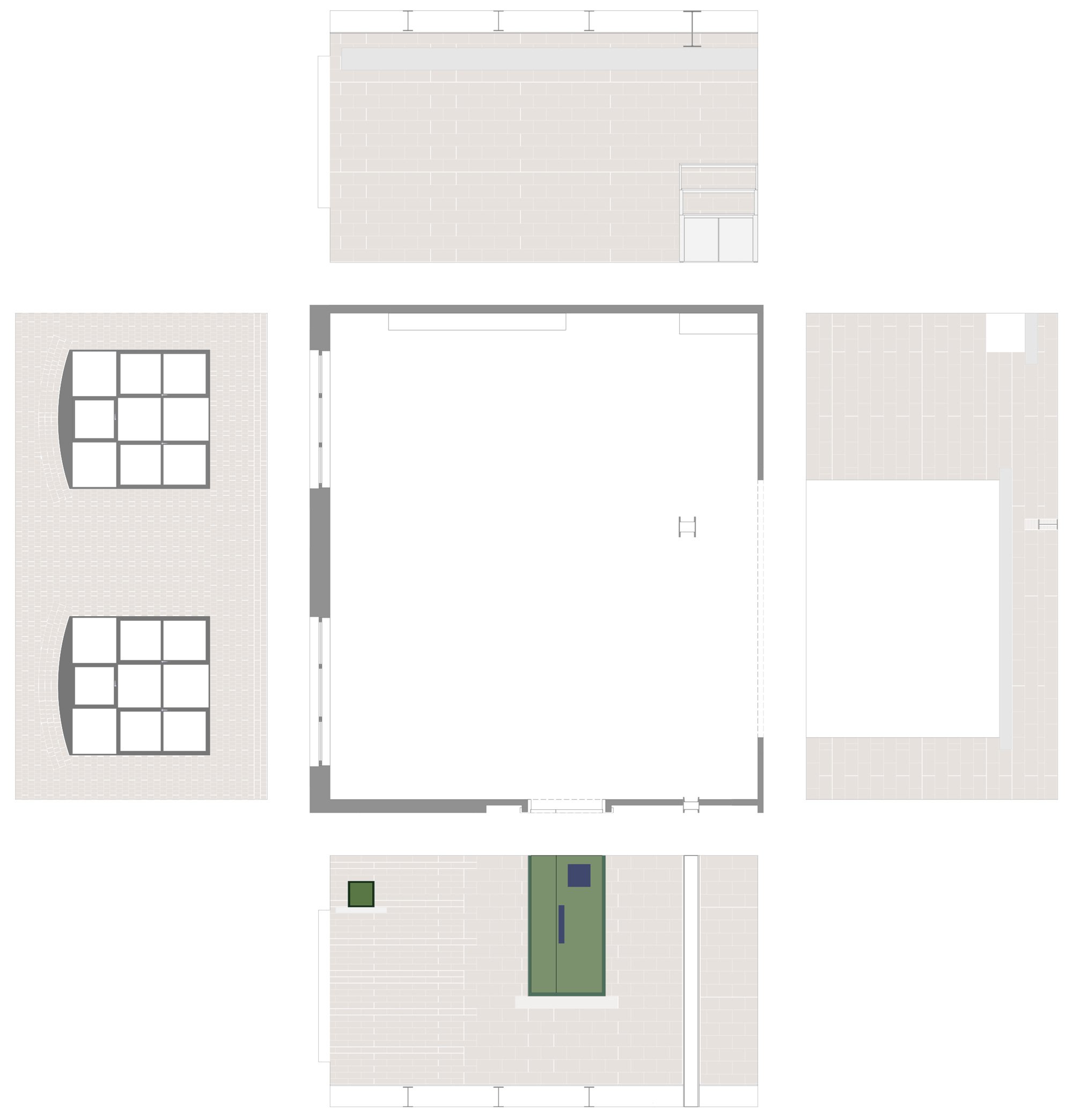
Interior Elevation
-
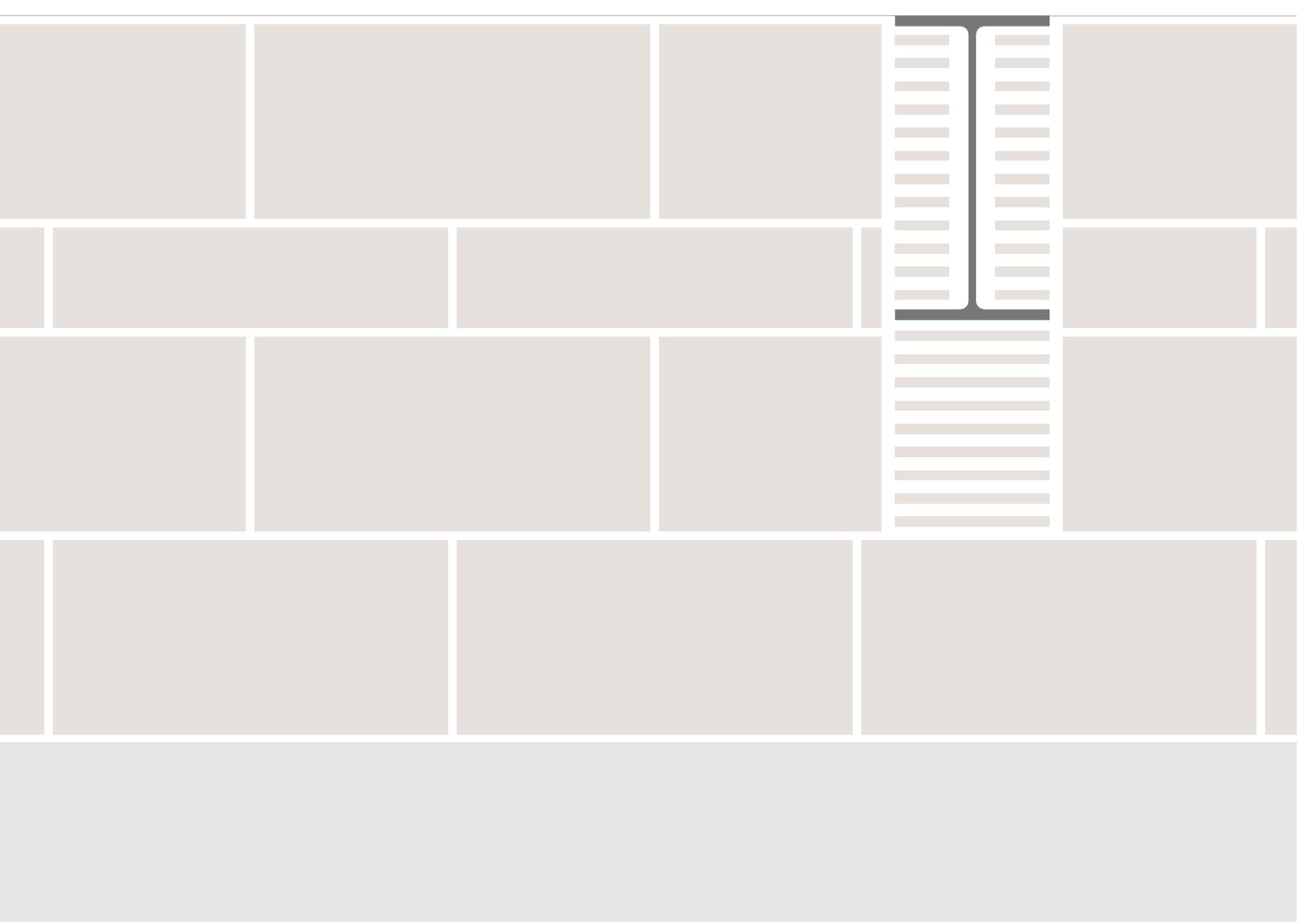
Blockwork – at times fair-face and irregularly laid, at others grooved - adds tactility and texture at strategic points within the interior
-
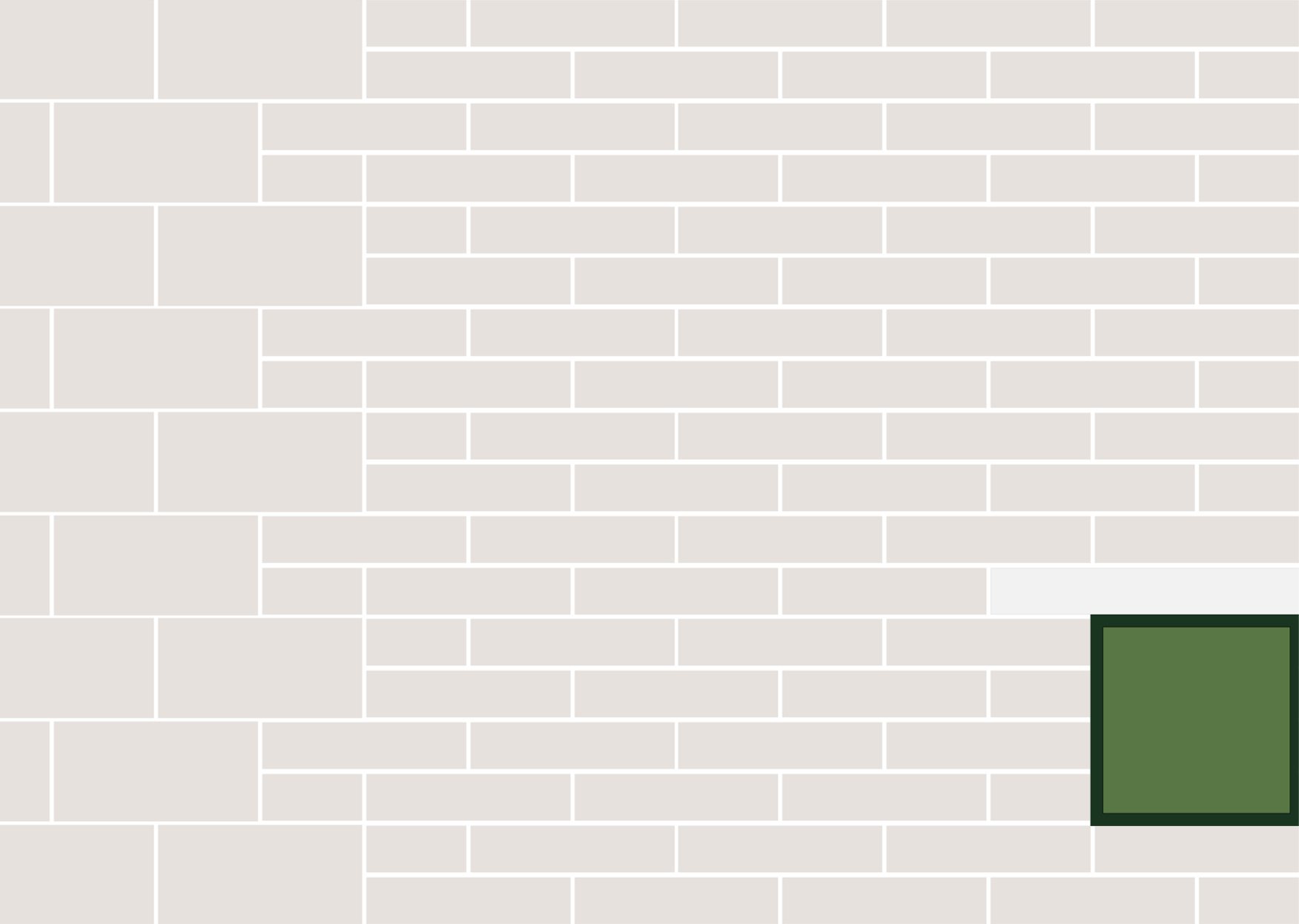
From an environmental perspective, it is important to note that the blockwork partitions employed have lower embodied carbon than the more common steel stud wall equivalents

























